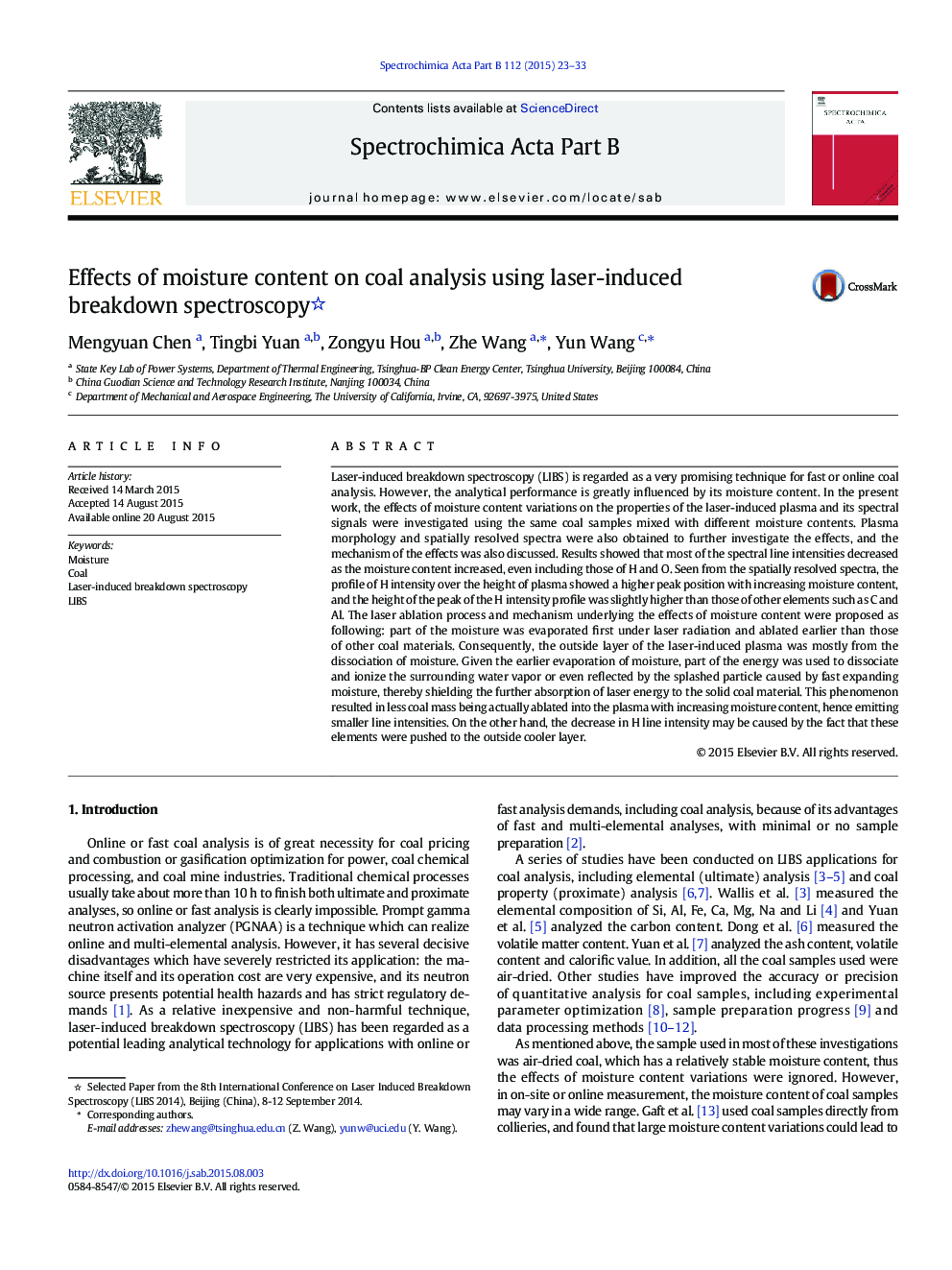| Article ID | Journal | Published Year | Pages | File Type |
|---|---|---|---|---|
| 1239869 | Spectrochimica Acta Part B: Atomic Spectroscopy | 2015 | 11 Pages |
•The effects of moisture content variations on coal plasma were systematically investigated.•The laser–material interaction process for coal samples with high moisture content was described.•The mechanisms underlying the effects of moisture content on LIBS analysis were determined.
Laser-induced breakdown spectroscopy (LIBS) is regarded as a very promising technique for fast or online coal analysis. However, the analytical performance is greatly influenced by its moisture content. In the present work, the effects of moisture content variations on the properties of the laser-induced plasma and its spectral signals were investigated using the same coal samples mixed with different moisture contents. Plasma morphology and spatially resolved spectra were also obtained to further investigate the effects, and the mechanism of the effects was also discussed. Results showed that most of the spectral line intensities decreased as the moisture content increased, even including those of H and O. Seen from the spatially resolved spectra, the profile of H intensity over the height of plasma showed a higher peak position with increasing moisture content, and the height of the peak of the H intensity profile was slightly higher than those of other elements such as C and Al. The laser ablation process and mechanism underlying the effects of moisture content were proposed as following: part of the moisture was evaporated first under laser radiation and ablated earlier than those of other coal materials. Consequently, the outside layer of the laser-induced plasma was mostly from the dissociation of moisture. Given the earlier evaporation of moisture, part of the energy was used to dissociate and ionize the surrounding water vapor or even reflected by the splashed particle caused by fast expanding moisture, thereby shielding the further absorption of laser energy to the solid coal material. This phenomenon resulted in less coal mass being actually ablated into the plasma with increasing moisture content, hence emitting smaller line intensities. On the other hand, the decrease in H line intensity may be caused by the fact that these elements were pushed to the outside cooler layer.
